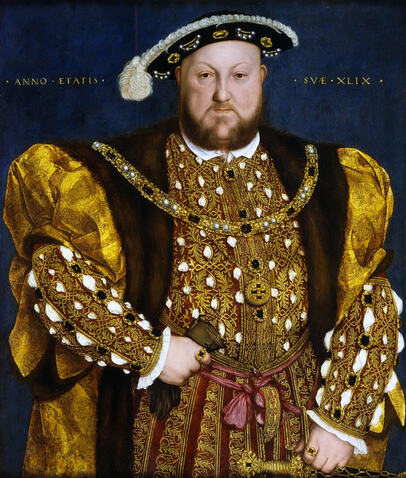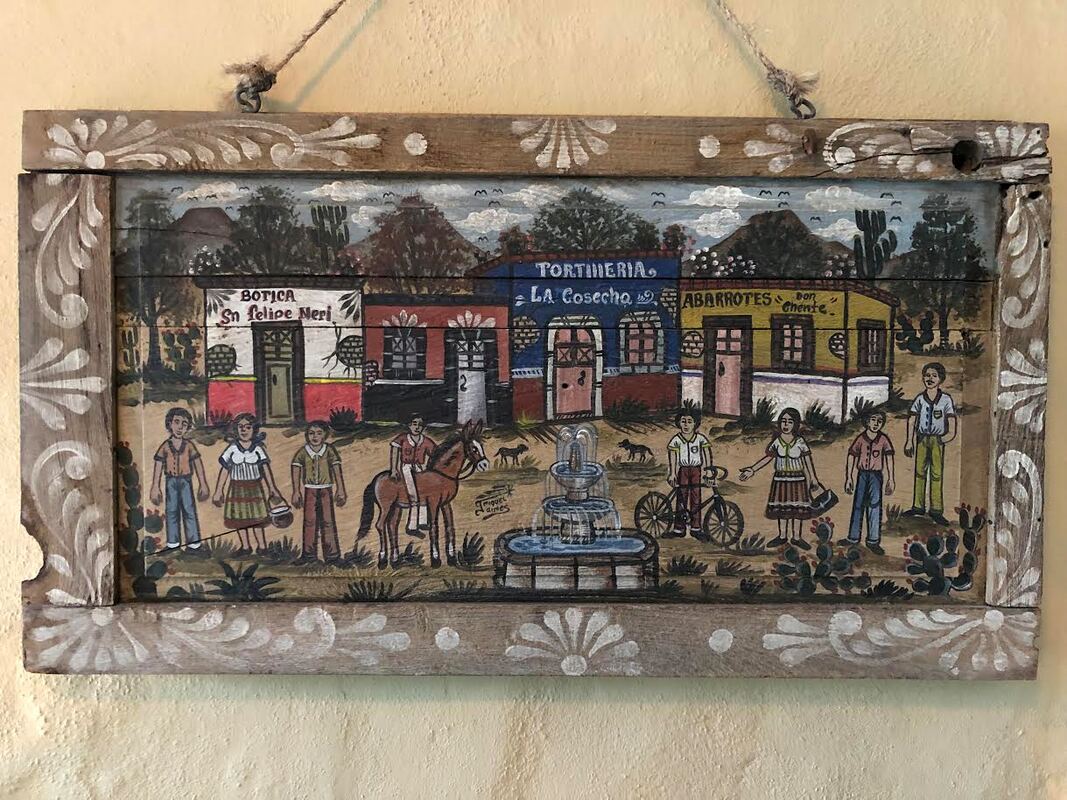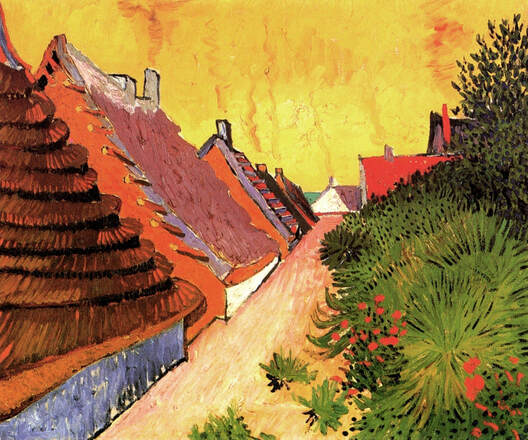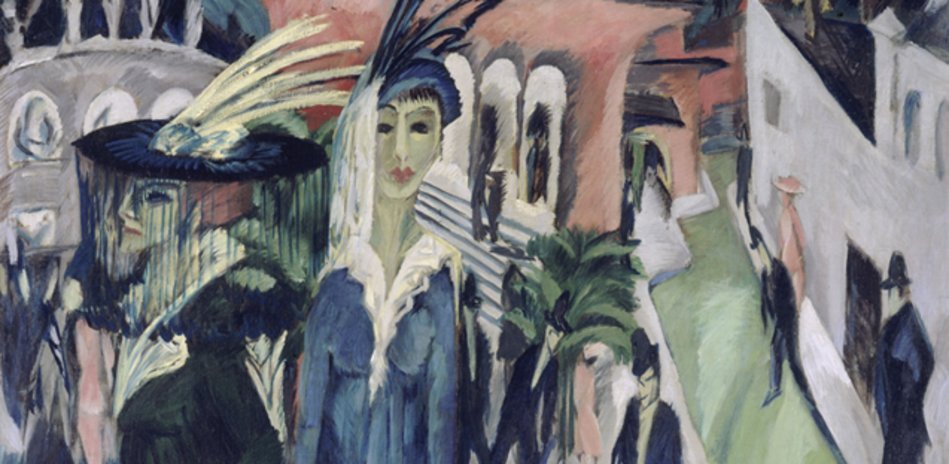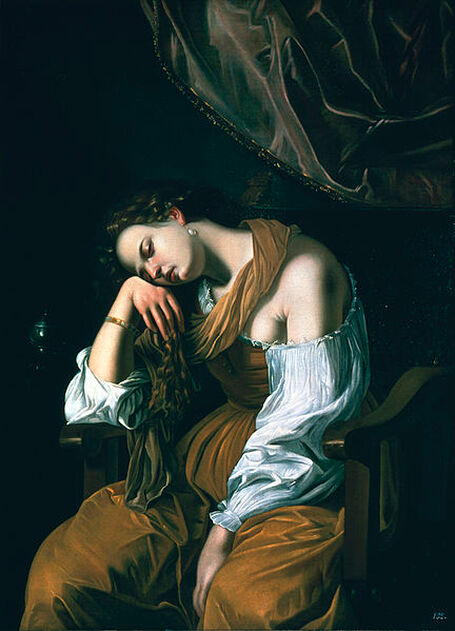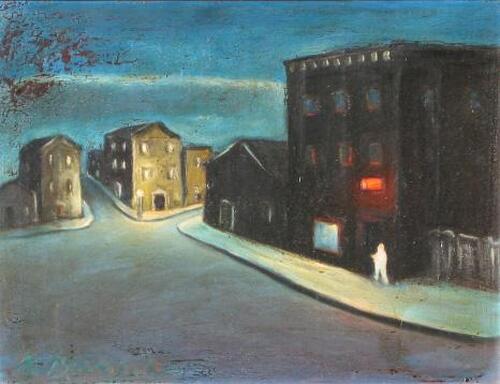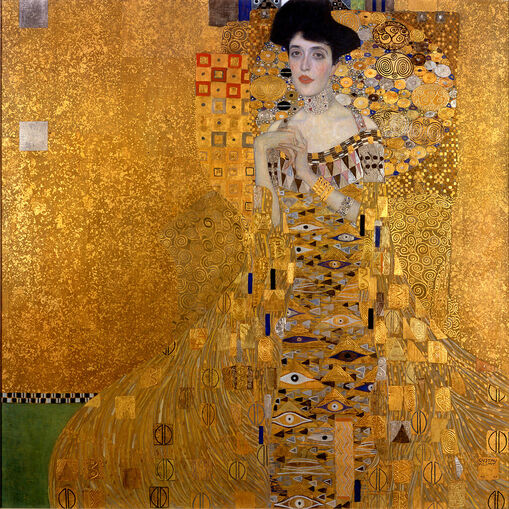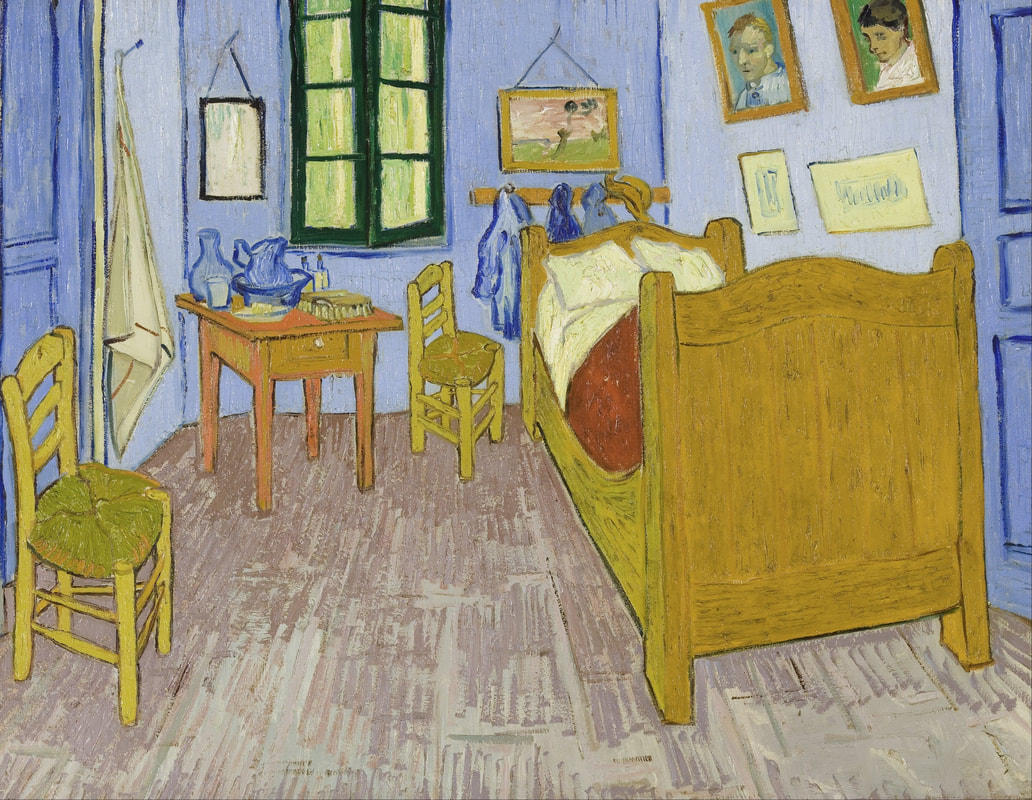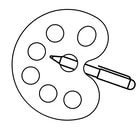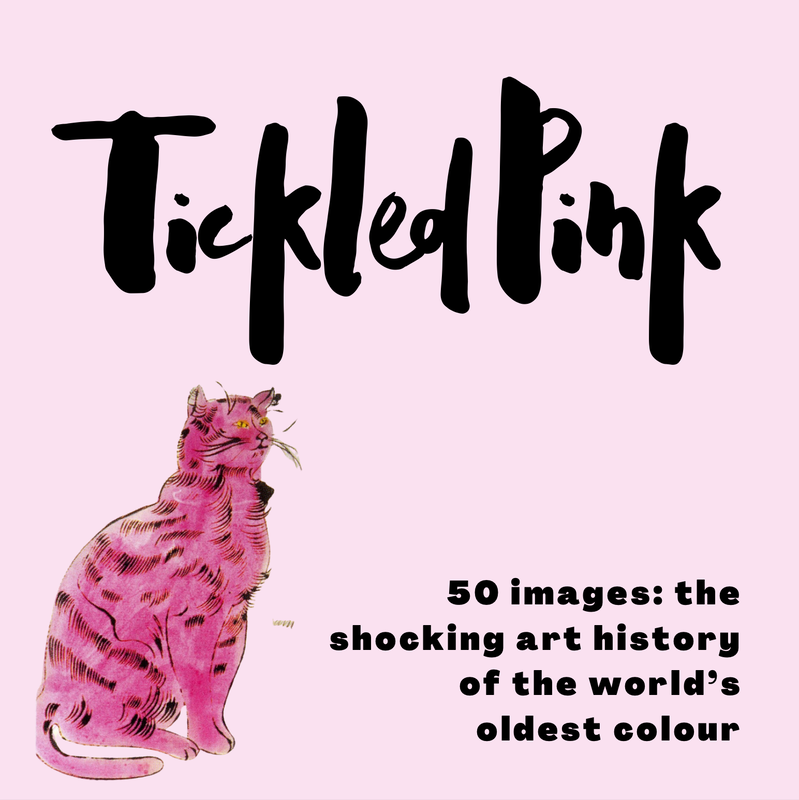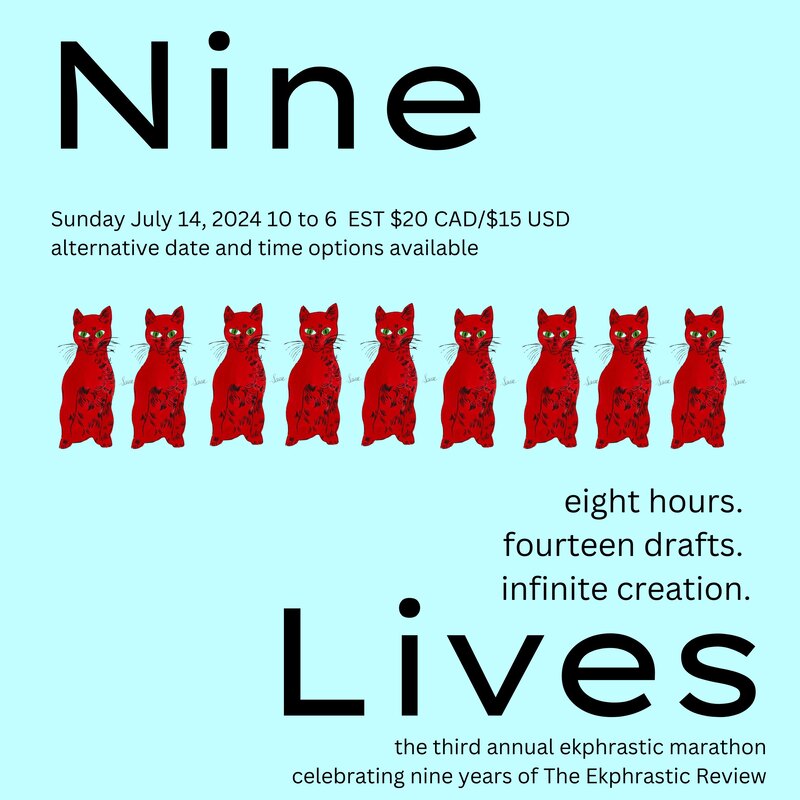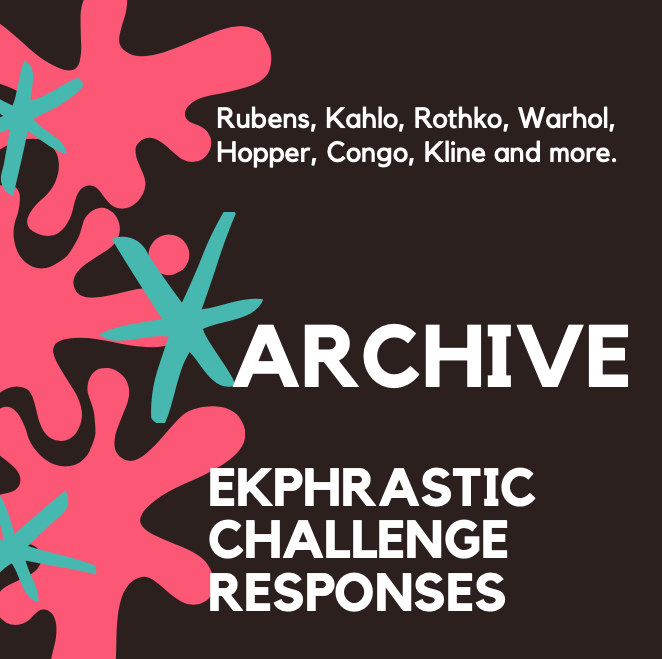|
Painting Henry To feed my family I paint his girth again (such privilege at court I can’t evade). King Henry’s doublet could enfold three men inside its mink and glinting gold brocade. I draped a band of jewels around his chest; together with the slope of his plumed hat, it makes a hint of halo–my private jest and public tout of this colossal rat. Although I’ve made his royal raiment glow, I’ve not adorned the plunder of his face– his tiny mouth, his cheeks like risen dough, his weasel eyes. And though I know my place and bow to most caprices and commands, I won’t enlarge his most unmanly hands. Barbara Lydecker Crane Barbara Lydecker Crane has won Laureate’s Choice awards from the Maria Faust Sonnet Contest in 2016 and 2018, as well as First Prize in the 2011 Helen Schaible International Sonnet Contest. She was a finalist for the 2017 Rattle Poetry Prize. She has published three chapbooks: Zero Gravitas (2012), Alphabetricks (2013), and BackWords Logic (2017). Her poems have appeared in First Things, Light, Measure, Rattle, Valparaiso Review, Think, Writer’s Almanac, and several anthologies. She’s also an artist.
1 Comment
The Sayulita I See
In the galleries of the village of Sayulita, along the Pacific Coast of Mexico, painters paint contemporary scenes evoking traditions-- men and women dance in plazas during fiestas or gather around an al pastor stand at night. But in the painting on an old shutter hung lengthwise on the living room wall of my Airbnb, Juan Miguel Jaimes painted contemporary people in an Olvera Street setting of crumbling adobe walls. The contrast between the past and the present jolts me to imagine repainting this scene to reflect the Sayulita I see: The man on the left with the orange shirt and blue jeans would wear cut-off shorts, no shoes, and no shirt. A happy trail of hair extends to his navel. The woman next to him with a pot would sell Huichol crafts— beaded bracelets, necklaces, and keychains. The youth with the white-collar shirt and brown pants would wear swim trunks and carry a cellphone. The sand from the beach clings to his feet. The boy wearing white pants and seated on a burro would sit in a golf cart, waiting for his parents. His brown legs dangle from his white Bermudas. The youth with a bike to the right of the fountain would keep his bike but rid excess clothes. He rides in shorts, wind cooling his skin. The woman to his right, instead of traditional dress, would wear a bikini beneath a veil kimono. The man to her right would be a Canadian surfer. Fantastic tattoos cover his body like that of an alebrijes. And the moustached man to the right with a hand in his pocket would hold a tuba drink of coconut sap and apple vinegar, his body so hairy that he walks around 90° heat in trunks. The two dogs facing off in the plaza can remain as well as the black cat walking along the roof, but I must reimagine the shops to reflect the Sayulita I see. La Botica San Felipe Neri would become an OXXO, the house would become a restaurant known for its chile rellenos, Tortilleria La Cosecha would remain a local institution, and Abarrotes Don Chente would sell food to locals and tourists. I’m not making these people and places up. This is the Sayulita I see daily when I walk or ride through town. This completes my reimagining of the painted shutter. But if I could paint, I would turn the shutter over and paint the Sayulita I see and then leave it hanging when I depart my vacation rental. Would the homeowners notice the changed painting? Andre Le Mont Wilson Andre Le Mont Wilson was born in Los Angeles, the son of poets. His work has appeared multiple times in sPARKLE + bLINK, Not Your Mother's Breast Milk, Failed Haiku, and the Society of Classical Poets. His work has been anthologized in Changing Harm to Harmony, Civil Liberties United, and Heat Up the Grease, We’re Frying Up Some Poetry. He has been nominated for the Pushcart Prize. Street in Saintes-Marie de la Mer I. What cannot be captured spilling, spreads; it will not be denied; it becomes alive beneath the artist’s eye. Simple, how a spray of colour caught in thickets of pigment and oil restrained upon a canvas recalls the hand that held the brush, recalls the eye that gazed at this, not house or sun or shrub but this canvas become a record of where a hand smeared a curl of paint to become a trail of smoke. II. In this painting there are no shadows only fields of colour pressed by the artist upon a memory: houses descending into the sun yellow sky descending beyond the descending horizon. A burst of green becomes flowering shrubs; blue and red blossoms flaring from the stiffening palette that turns a thatched roof into tiers of taffeta swirling, as if all he saw was colour --so alive. Herman Sutter Herman Sutter is the author of The World Before Grace (Wings Press). His poetry and stories have appeared in: Touchstone, i.e., The English Review, Saint Anthony Messenger, The Houston Poetry Fest, and the anthology, By the Light of a Neon Moon (Madville Press, 2019). His narrative poem, "Constance" received the Innisfree prize for Poetry, and his poem for voices The World Before Grace was honored by the Texas Playwrights Festival. The Showplace The women sometimes wonder why they come to this place, but then they remember that the Witching Hour is the best time to be in the square. The angular men that surround them, mostly keeping in the shadows are attracted by their alien presence. Occasionally they build sufficient courage to step off and approach. Such is life on the jagged streets, such is the way of Potsdamer Platz. Henry Bladon Henry Bladon is a writer of short fiction and poetry based in Somerset in the UK. He has degrees in psychology and mental health policy and a PhD in literature and creative writing. His work can be seen in Potato Soup Journal, Forth Magazine, Mercurial Stories, thedrabble, Tuck Magazine and Spillwords Press, among other places. Voyage to Labrador Illness shows no mercy as I wake to daydream of a painting’s winter world: aboard a lonesome ship that Alfred Wallis has coloured as earthy as the muddy ground outside my bedroom window, I ride through blue-white slush rolling on the Labrador Sea. Skeletal icebergs gleam ghostly blue in an everlasting midnight. Not a single star shines, and I cannot tell which way the chugging ship will go: into that comb of frigid teeth, away from the pain of disease that breaks a man in two? or toward growing hope of finding courage to renew myself, however marred? Crescent waves of lilies outside my open window flutter like a gull’s wings, bend like whitecaps on the sea; some, freed from their stems by a gust, swirl past the sash and fall like ruined hopes to the floor by my bedside while quarter bells clang, echo off the polar coast. From the ship’s two chimneys smoke rises, curves over the bow as I whisper unanswered prayers that blend with the engine’s hum. Throughout the eternal night, no one keeps me company; all others sleep below the deck while turbulent currents whirl past claw-like ice-chunks: talons that grasp like death. While flower petals gather in shadows near my bed, through the arctic sea in the gilded frame I ride, listening to a seabird’s far-off fading cry. Gregory E. Lucas This poem originally appeared in Ekphrasis. Gregory E. Lucas writes fiction and poetry. His short stories have appeared in Pif, The Horror Zine, Freedomfiction.com and in other magazines. His poems have appeared in Ekphrasis, Yelllow Mama, Better Than Starbucks, in previous issues of The Ekphrastic Review, and in other magazines. The Ekphrastic Review's Pushcart Nominations The Ekphrastic Review is delighted to present our first ever nominations for the Pushcart Prize. The annual Pushcart anthology is a longstanding literary tradition honouring the small press. This year, The Ekphrastic Review formed a prize nomination committee so that we can begin celebrating the incredible talent of our writers through nominations for Best of the Net, the Pushcart, and coming soon, our very own Ekphrastic Review recognition of excellence. Thank you to the prize nominating committee for your commitment, your generous donation of time, your insights, and the gift you give to your fellow poets: Laura Cherry, Kari Ann Ebert, Carole Mertz, Alarie Tennille, and Jordan Trethewey. Here are the nominations: do not speak to me of pain, by Ali Whitelock http://www.ekphrastic.net/ekphrastic/do-not-speak-to-me-of-pain-by-ali-whitelock Louisiana Zombie Afternoon, by Kyle Laws http://www.ekphrastic.net/ekphrastic/jenn-zed-ekphrastic-challenge-responses-poetry Vanessa Bell is Sending Me Dreams, by Patricia Goodwin http://www.ekphrastic.net/ekphrastic/vanessa-bell-is-sending-me-dreams-by-patricia-goodwin Fauves of Luxury, Calm, and Desire, by Janiru Liyanage http://www.ekphrastic.net/ekphrastic/fauves-of-luxury-calm-and-desire-by-janiru-liyanage Pair of Cranes, by Deborah Schmidt http://www.ekphrastic.net/ekphrastic/pair-of-cranes-by-deborah-schmidt Corollary, by Rajani Radhakrishnan http://www.ekphrastic.net/ekphrastic/corollary-by-rajani-radhakrishnan Congratulations to our Pushcart nominees! ** Just a note that in 2017, Jo Balistreri was nominated for a Pushcart by the Pushcart team of editors! She was The Ekphrastic Review's first Pushcart nominee at a time we were not yet able to nominate for prizes. Read her poem here. Self Portrait in Shadow The stroke of a shadow engulfs the crevices of her body; that they are hidden only enhances their magnetism. The eyelid is swollen with salt, the eye a vertical slant of blackness. This is thought to be the artist’s self-portrait. The right hand is limp under her cheek, a useless comfort also tired of grasping. Her whole self is sunken and bloated, as if moored on the bed of a tenebrous ocean. There is no delirium that persists in this setting, no silent fumbling for forgivness. Instead, a chiaroscuro curtain like a slow stream welling to the surface, a figure draped in dull gold with a pearl forgotten against her neck in favour of darker objects. Madeleine Quirk Madeleine Quirk is an undergraduate student at Queen's University. She lives in Kingston, Ontario. Ekphrastic Writing Challenge: Matthew Rackham Barnes
Join us for biweekly ekphrastic writing challenges. See why so many writers are hooked on ekphrastic! We feature some of the most accomplished influential poets writing today, and we also welcome emerging or first time writers and those who simply want to experience art in a deeper way or try something creative. The prompt this time is Noe Valley, by Matthew Rackham Barnes. Deadline is November 29, 2019. The Rules 1. Use this visual art prompt as a springboard for your writing. It can be a poem or short prose (fiction or nonfiction.) You can research the artwork or artist and use your discoveries to fuel your writing, or you can let the image alone provoke your imagination. 2. Write as many poems and stories as you like. Send only your best works or final draft, not everything. (Please note, experimental formats are difficult to publish online. We will consider them but they present technical difficulties with web software that may not be easily resolved.) Please copy and paste your submission into the body of the email, even if you include an attachment such as Word or PDF. 3. Have fun. 4. USE THIS EMAIL ONLY. Send your work to ekphrasticchallenge@gmail.com. Challenge submissions sent to the other inboxes will most likely be lost as those are read in chronological order of receipt, weeks or longer behind, and are not seen at all by guest editors. They will be discarded. Sorry. 5.Include MATTHEW RACKHAM BARNES WRITING CHALLENGE in the subject line in all caps please. 6. Include your name and a brief bio. If you do not include your bio, it will not be included with your work, if accepted. Even if you have already written for The Ekphrastic Review or submitted other works and your bio is "on file" you must include it in your challenge submission. Do not send it after acceptance or later; it will not be added to your poem. Guest editors may not be familiar with your bio or have access to archives. We are sorry about these technicalities, but have found that following up, requesting, adding, and changing later takes too much time and is very confusing. 7. Late submissions will be discarded. Sorry. 8. Deadline is midnight, November 29, 2019. 9. Please do not send revisions, corrections, or changes to your poetry or your biography after the fact. If it's not ready yet, hang on to it until it is. 10. Selected submissions will be published together, with the prompt, one week after the deadline. 11. Rinse and repeat with upcoming ekphrastic writing challenges!
Who’s Your Girl? Tim Gunn asks the question frequently, narrowing his eyes at the creations and collections of Project Runway contestants – Who’s your girl? he queries, not unkindly. Where’s she wearing this over-sized graffiti bomber jacket? That metallic faux-snakeskin sweater? This sheer full-length kimono? What’s her story? Where is she going? Does she need so many red-sequined tunics? Tim’s expected answers range from chic young socialites to hip younger bohemians. Designers need know their girl could be 80 years old. You’re girl’s a ginger-haired goddess – she’s my mom. Mom wore the graffiti bomber jacket to mahjong, the metallic faux snakeskin sweater to the opera and CVS. She’d answer Tim’s question about sequins: I need them all, Tim. You can’t have too many sequins paired with slim black pants. Mom’s most magical creations were inspired by celebrations. Outfits for children’s birthdays and elegant galas were assembled with equal attention and care. She mixed vibrant jewel or shimmery champagne tones with black and plenty of jewelry. Mom was a peacock even when she needed help dressing. The day she stayed in her nightgown, we knew we were near the end. So Tim, you never know who your girl is – she might be me, my mother’s clothes are in my closet. My inheritance sparkles and smiles. Sheila Wellehan Sheila Wellehan's poetry is featured in the Aurorean; Forklift, Ohio; Thimble Literary Magazine; Tinderbox Poetry Journal; Whale Road Review, and many other journals and anthologies. She lives in Cape Elizabeth, Maine. Visit her online at www.sheilawellehan.com . The Bedroom at Arles (1888) the pain inside feels like sadness I told Mrs. Hall & she sent me to the nurse Mrs. Jennings who said I could lie on the grey vinyl couch until it passed I was learning to read that year & learning too how to avoid the daily labours of noun & verb grammar sentence syntax hourly drills of getting it right the couch faced the wall where hung on the left an eye chart with its sad hieroglyphs of failure but on the right was another room's secret portrait askew all yellows & reds & blues two windows two pillows two chairs the careening floor & staggering door a counter image of the school's ordered brick and parallel lines to lunch I was thinking sixth grader because the perspective was close but not perfect it was almost right almost a room I could live in back in class they were perfecting the period the comma the capital letter I was turning on the verge of another sentence slipping on the vertiginous floor of the room in the wall where I had never gone it was telling me a story getting it right wasn't the point I would lie there long minutes listening to my insides turn & surge not getting any better & not wishing to Matthew M. Cariello Matthew M. Cariello's poetry, A Boat That Can Carry Two (2011) and Talk (2019) were both published by Bordighera Press. His stories, poems and reviews have been published in Voices in Italian Americana, Poet Lore, Ovunque Siamo, Evening Street Review, Modern Haiku, The Long Story, Indiana Review, Iron Horse Review, and The Journal. He is currently a senior lecturer in the English department at OSU in Columbus. |
The Ekphrastic Review
COOKIES/PRIVACY
This site uses cookies to deliver your best navigation experience this time and next. Continuing here means you consent to cookies. Thank you. Join us on Facebook:
Tickled Pink Contest
April 2024
|
